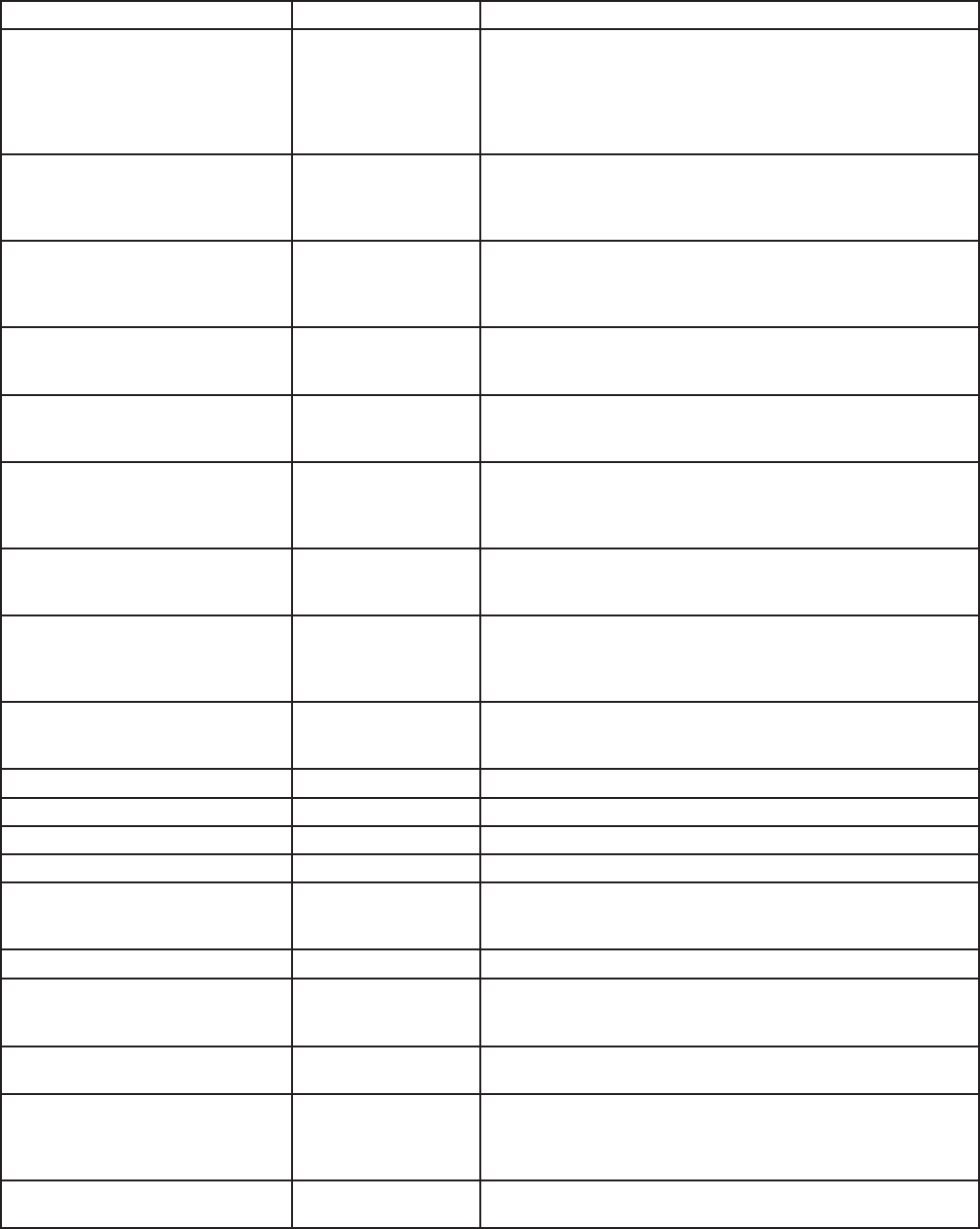
39GHP 10 Marine Autopilot System Installation Instructions
Category Setting Description
Tachometer Setup Verify Tachometer With the engine (or engines) running, compare the RPM readings on the
GHC 10 with the tachometer on the dashboard of your boat. Adjust the
Pulses Per Rev with the arrows if the values do not match, and then
select Done. When you adjust the Pulses Per Rev with the arrows, there
is a delay before the new RPM readings appear on the GHC 10. For each
adjustment, be sure to wait until the GHC 10 adjusts to the new reading.
Tachometer Setup RPM Source Select the engine (or engines) to which you wired the tachometer sensor
from the CCU. If you connected a NMEA 2000-compatible engine to the
NMEA 2000 network, select NMEA 2000. For a single-engine boat, select
port.
Tachometer Setup Planing RPM Take note of the RPM reading from the tachometer on the dashboard of
your boat at the point your boat transitions from displacement to planing
speed. If the value does not match the value on the GHC 10, use the
arrows to adjust the value.
Tachometer Setup Low RPM Limit Take note of the RPM reading from the tachometer on the dashboard of
your boat at the lowest RPM point. If the value does not match the value
on the GHC 10, use the arrows to adjust the value.
Tachometer Setup High RPM Limit Take note of the RPM reading from the tachometer on the dashboard of
your boat at the highest RPM point. If the value does not match the value
on the GHC 10, use the arrows to adjust the value.
Hydraulic Setup Helm Displacement The helm displacement is usually written on the body of the helm pump.
If you are unsure, consult the manufacturer of your boat for the helm
displacement value. Use the arrows on the GHC 10 to enter the helm
displacement value.
Hydraulic Setup Lock to Lock Turns Count the number of turns it takes your helm to go from lock to lock (fully
turned port to fully turned starboard). Use the arrows on the GHC 10 to
enter the value you counted.
Hydraulic Setup Verify Steering Direction Use the arrows on the GHC 10 to test the steering direction. When you
push the right arrow, the motor should turn the boat to the right, and vice
versa. Determine if the engines are steering in the correct direction and
press Continue. Use the GHC 10 to answer the questions.
Hydraulic Setup Linkage Compensation Adjust the linkage compensation if the steering is loose or sloppy. The
higher you set this value, the more the autopilot compensates for loose or
sloppy steering. Use this setting with caution.
Turn Fine Tuning Setup > Rudder Gains Low Speed Set the rudder gain for low speeds.
Turn Fine Tuning Setup > Rudder Gains Low Speed Counter Set the rudder gain counter-correction for low speeds.
Turn Fine Tuning Setup > Rudder Gains High Speed Set the rudder gain for high speeds.
Turn Fine Tuning Setup > Rudder Gains High Speed Counter Set the rudder gain counter-correction for high speeds.
Turn Fine Tuning Setup Acceleration Limiter Limit the aggressiveness of autopilot-controlled turns. Increase the
percentage to limit the turn rate, and decrease the percentage to allow
higher turn rates.
Navigation Setup Fine Heading Adjustment Increase or decrease to ne-tune the autopilot heading.
Navigation Setup > NMEA Setup NMEA Checksum If the connected GPS unit incorrectly calculates checksums, you may
still be able to use it if you turn this setting off. When off, data integrity is
compromised.
Navigation Setup > NMEA Setup Reversed XTE If the connected GPS unit sends the incorrect steering direction with the
cross track error signal, use this setting to correct the steering direction.
Navigation Setup Navigation Gain Because the cross track error data transmitted by a NMEA 0183 GPS
device is only accurate within .01 mile (60 ft.), the gain may need
adjustment. Increase this setting until the boat oscillates back and forth
near the course line, then lower it a few levels.
Navigation Setup Navigation Trim Gain After adjusting the Navigation gain, increase this setting until you can see
the standoff from the course line decreasing over time.
NOTE: Certain conguration settings are available when using the GHC 10 normally, such as enabling and disabling the Shadow
Drive, adjusting the sensitivity of the Shadow Drive, and adjusting the Sea State Filtering setting. See the conguration section of the
GHP 10/GHC 10 Quick Start Manual for more information.


















